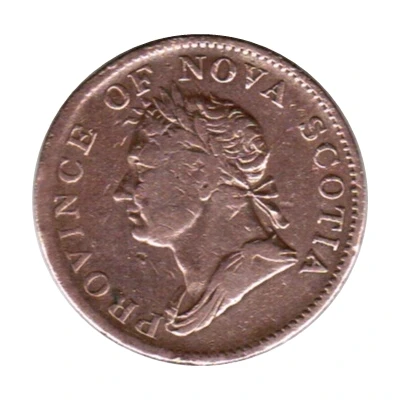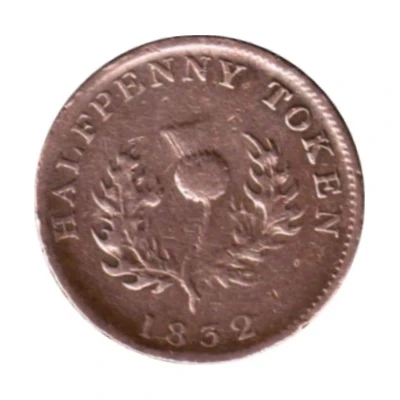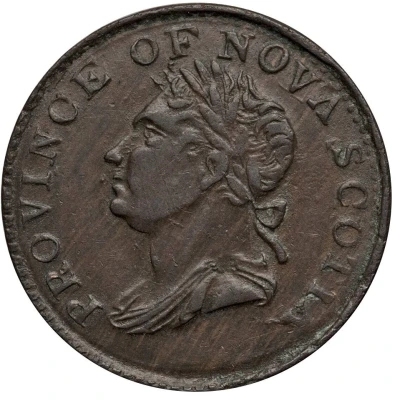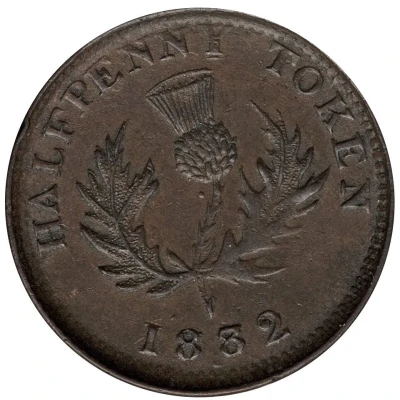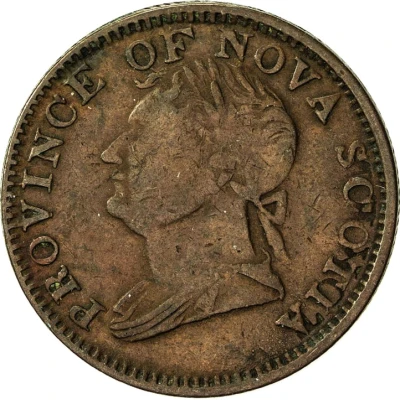
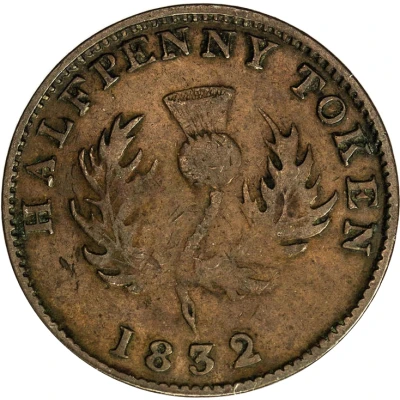

© Stephen Album Rare Coins
½ Penny Token - George IV counterfeit
1832 year| Copper | 6.8 g | 28.4 mm |
| Issuer | Nova Scotia (Canadian provinces) |
|---|---|
| Type | Token |
| Year | 1832 |
| Value | ½ Penny (1⁄480) |
| Currency | Pound (1812-1860) |
| Composition | Copper |
| Weight | 6.8 g |
| Diameter | 28.4 mm |
| Shape | Round |
| Orientation | Variable alignment ↺ |
| Demonetized | Yes |
| Updated | 2024-10-04 |
| Numista | N#98222 |
|---|---|
| Rarity index | 77% |
Reverse
A thistle surrounded by lettering, date below.
Script: Latin
Lettering:
HALFPENNY TOKEN
1832
Edge
Engrailed, plain
Comment
Weight: 6.2 - 7.5gDiameter: 28.2 - 28.6mm
NS-3A1 Obv. 3 locks of hair before laurel crown, 3rd lock touches "F" of OF
Rev. Left thistle leaf has 19 points, stem points to "3", coin alignment
NS-3A2 Obv. 2 wavey locks of hair before laurel crown, 2nd lock touches both "O" and "F" of OF
Rev. Left thistle leaf has 19 points, stem points to "3", coin alignment
NS-3A2a As NS-3A2, Medal alignment
NS-3A3 As NS-3A2, Brass
NS-3A4 As NS-3A2, Obverse clash Scotia / Token
Wiley believes these tokens were struck in Montreal and circulated in Nova Scotia. Jacobs (newer thought) believes they were struck at the Belleville Mint in New Jersey and circulated in Upper Canada. Both agree on the time, circa 1835.
Interesting fact
The A Token ½ Penny Token - George IV (counterfeit) 1832 from Nova Scotia (Canadian provinces) made of Copper weighing 6.8 g is an interesting coin because it is a counterfeit coin that was created to address the shortage of small change in the Canadian provinces during the 1830s. Despite being counterfeit, it is still considered a valuable collector's item among numismatists today.
